We earn a commission for products purchased through some links in this article.
If you have the space, a cut flower patch – a dedicated space for growing flowers specifically for cutting – allows you to enjoy your own homegrown blooms from late winter through to late autumn.
If you enjoy bringing the outside in, gathering a few flowers from your garden to admire on the kitchen table or adding atmosphere to a dinner party, then consider creating a small cut flower garden.
There is no denying that a flower will generally last longer outside. Once cut, its lifespan is often shortened meaning many gardeners prefer leaving them outside to enjoy and instead, buy imported flowers flown in from across the globe. However, this is expensive and creates a disconnect from the seasonal moment happening outside our back doors.
Creating a cut flower garden
For a dedicated cut flower patch, locate a spot where you can create a couple of long linear beds, around one metre by three metres. A one metre width is perfect, offering easy access to plant, weed and pick across the whole bed without needing to walk on it. Ideally, this space should get plenty of sun. Use one bed for annuals and one for perennials.
Next, consider using the 'no dig' approach to create your beds. This method is best for soil health and will ultimately produce happier, healthier blooms. Alternatively, you may prefer the look of raised beds. There are plenty of great suppliers or you could make your own with recycled scaffold boards.
Cut flowers: what to plant
It's a good idea to consider planting a mix of perennials; plants that return year after year, and annuals; plants that grow, flower and die in one season. Perennials can provide a backbone of potential throughout the growing year but often only produce flowers for a short time, whereas the annuals are very often cut and come again, meaning the more you cut the more you will get. Annuals stop flowering once they have set seed. So, if you can keep on top of the cutting, seed formation will be prevented meaning more flowers are produced.
Trudie Davidson Getty Images
Sowing annuals
Growing a plant from seed is hugely rewarding and is not nearly as difficult as it might appear. You will need some basic equipment…
- Seed trays and pots
- Peat free seed compost or make your own from a mix of garden compost with garden soil.
- Labels and a permanent marker
- A light airy windowsill, not in full sun, a small PVC greenhouse or a greenhouse.
Once the seeds have germinated, and you can see two true leaves, you can carefully pop them into a bigger pot to grow on or if the risk of frost has passed, simply plant straight out into your prepared bed. You do not need to sow all the seeds in a packet, you will have far too many plants. Sow around 10 seeds, saving the rest so you have some spare if a few fail or if you want to sow a few more later in the summer.
Once your annuals stop producing flowers later in the season, pull them up and place on your compost heap. Meantime, if you have sown a few more seeds, they can then be planted in their space. This is called successional sowing.
Perennials
Perennials can also be grown from seed but usually don't flower for at least the first year. If you can't wait that long, you will find everything you need and more at your local nursery, garden centre or plant fair. Try to buy plants grown in peat free compost and keep all the pots to reuse for seed sowing.
Perennials tend to flower for a short period. Once they have finished, they will bush up and absorb energy and nutrients ready to die back for the winter to re-emerge next spring. If they disappear in winter, don't worry, their roots are working away under the soil and they will re-emerge with the sunshine the following year! They tend to increase in size every year, so give them more space than the annuals. Every three or four years the whole plant can be lifted in late autumn to early spring and divided into three or four new separate plants. This keeps the plant healthy and vigorous. These can then be planted through the rest of your garden or gifted to friends.
Below is a list of 20 plants suitable for a cut flower garden. They will not all fit into two beds, so you will have to choose. Of course, if you have the space, simply create a few more beds. These cut flowers all have a great vase life or are just too wonderful not to grow.
Late winter/early spring cut flowers
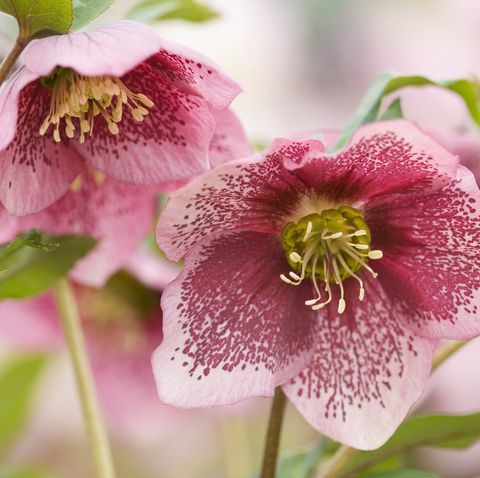
Hellebore
Hardy perennial / Plant in autumn / Repeat flowering: yes / Partial shade
Hellebores are magnificent plants which begin to bloom from late November until late April. They fill the bleak winter months with shy little faces of colour – pinks, reds, yellows and whites to deep purples. They are a wonderful nectar source for early emerging bees and make a fabulous cut flower once the plant has been pollinated and begins to form seed pods. No scent. Vase life of around one week.
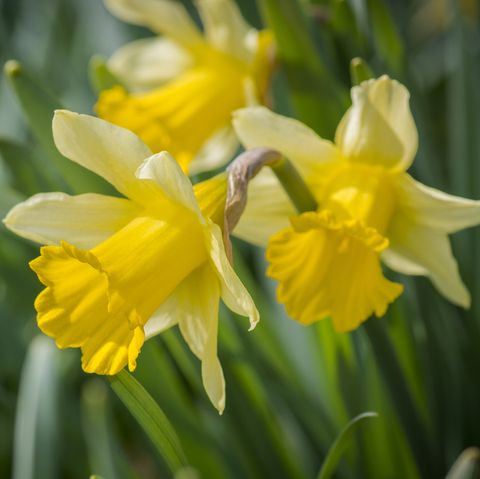
Narcissus
Hardy perennial / Plant in autumn / Repeat flowering: no / Partial shade
Narcissus, or daffodils as they are commonly known, are charming bulbs which, depending on variety will bloom from late January until early May. They vary from large to miniature, 8 to 45cm, and many are exquisitely scented. Ranging in colour from pure white to yellow to trumpets of orange, planting a variety of types ensures a supply of flowers for around four months. Vase life of four or five days but much longer from bud.
Spring/early summer cut flowers

Ranunculus
Half hardy perennial needing protection in prolonged severe weather / Plant in autumn / Repeat flowering: yes / Full sun/partial shade
Ranunculus come in shades of pink, purple, orange, yellow, red, coffee, cream and white. Related to buttercups, they are fabulous flowers full of tissue paper ruffles but no scent. They flower from May to July. If you have the space and live in a mild area, once they've finished flowering, leave them in the ground otherwise lift, store dry and replant next autumn. Excellent vase life.
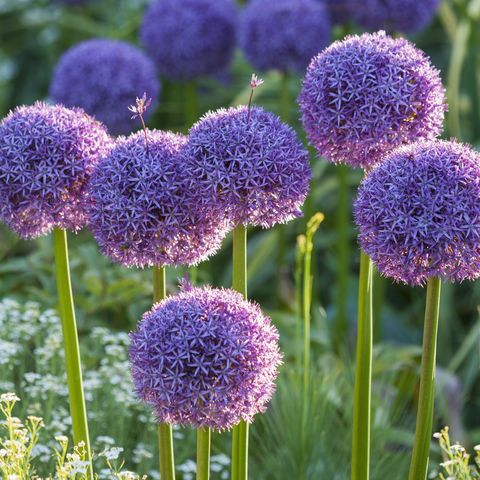
Alliums
Hardy perennial / Plant in autumn / Repeat flowering: no / Full sun
There are a huge range of allium bulbs to choose from. Some are small and dainty, whilst others have heads the size of footballs! Loved by pollinators, they generally come in shades of purple and mauve through to whites. They flower from May to July. When cut they can have a faint oniony smell. The dry seed heads are great for arrangements too. Long vase life.
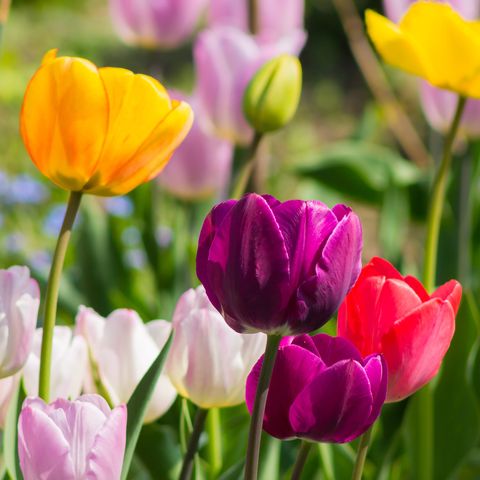
Tulips
Generally annual, a few are perennial / Plant in late autumn / Repeat flowering: no / Full sun or partial shade
Tulips are an investment but the stunning flowers in April and May make them a glorious addition to the cutting garden especially when mixed in with blossom. Available in pretty much every conceivable colour combination these bulbs have many beautiful shapes too, from parrots to fringed to doubles. They also work well in containers. Some are scented. Excellent vase life but note they will move towards the light.
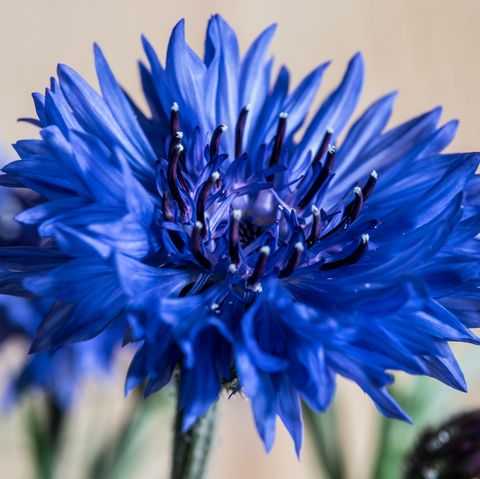
Cornflower
Hardy annual / Sow direct or under cover in spring or late autumn / Repeat flowering: yes / Full sun
Cornflowers, reminiscent of summer meadows, last well out of water making them ideal for use as wedding flowers. Loved by pollinators, they often self-sow and come in shades of blue, white, pink and purple. Keep cutting and they flower for weeks from May to September. No scent.

Peony
Hardy perennial / Plant in autumn to early spring / Repeat flowering: no / Full sun
Peonies are the epitome of early summer, flowering from May to early July. With huge, heavy-headed ruffles of scent, each plant will produce several blooms. They are excellent, long-lasting cut flowers, especially if picked at the squidgy bud stage. The plant will bulk up year on year.

Sweet Pea
Hardy annual / Sow under cover October to April. Direct sow March to May / Repeat flowering: yes / Full sun
Sweet peas are climbers so will require a wigwam type support or netting to grow up. These plants will need tying-in to the support as they climb. If picked almost daily, they can flower from May to October providing vases of sweetly scented pretty blooms in shades of pink, white, blue, orange, purple and red. Vase life is four or five days.
Summer cut flowers
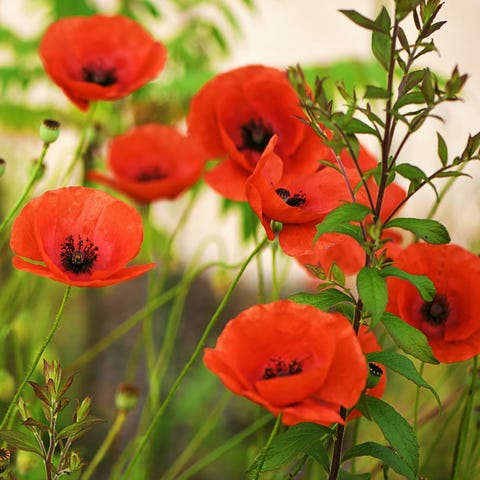
Poppy
Hardy annual or hardy perennial / Plant perennials in autumn to early spring / Sow annuals in late spring or early autumn / Repeat flowering: perennials – no, annuals – yes / Full sun
There are several types of poppies, but all produce beautiful flowers with tissue paper petals from June to August. They come in many colours and are loved by pollinators. Poppies will last around five days in a vase if picked when the bud just begins to crack open and show colour. No scent.
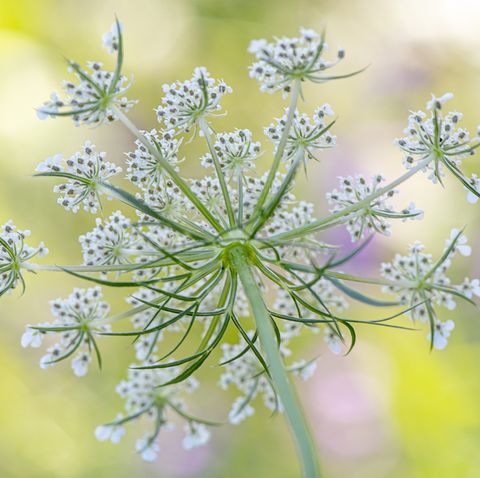
Ammi
Hardy annual / Sow in spring or autumn / Repeat flowering: no, but produces many blooms / Full sun
If you love the look of cow parsley, you will love ammi with its light, airy, floaty feel. It is extremely tall and may require staking. Ammi has a long flowering period from June to September and the seed heads are just as attractive as the white lacy flower. Gather these to use in dried winter arrangements. No scent.

Daucus
Hardy annual / Sow in autumn or spring or direct sow March/April / Repeat flowering: yes / Full sun
This is another beautiful lacy, umbellifer similar to cow parsley. Predominantly white, there are one or two varieties which will produce deep maroon or dusky pink flowers. Loved by pollinators, this plant will flower from June to September and may self sow. No scent. Long vase life.

Roses
Hardy shrub / Plant bare root in winter avoiding frosty days / Repeat flowering: generally, yes / Full sun
It's hard to imagine cutting flowers for the house and not wanting to include the beauty and scent of a few roses. The range of rose varieties and colour is staggering and good research is necessary to ensure you buy roses to meet your needs and garden aspect. Roses are an investment but will provide years of flowers if pruned in late winter and fed with rose food during the growing months. Flowers from June through to the first frosts. Incredible scent. Vase life is up to a week.

Nigella
Hardy annual / Sow March/April or August/September / Repeat flowering: yes / Full sun
Nigella also known as Love in the Mist, is a quintessential cottage garden flower. It will dance through borders, delicately weaving a pretty trail of pink, blue and white starry flowers from June to September. They are also edible, so a fabulous addition to salad or a summer cocktail. They have a long vase life even once the coloured petals have dropped, leaving a lacy pale green ruffle. The seed heads are perfect for winter arrangements so worth collecting and drying too. No scent.

Achillea
Hardy perennial / Plant from autumn to early spring but easy to raise from seed sown in spring / Repeat flowering: yes / Full sun
Achillea, also known as yarrow, is a fabulous filler flower for arrangements. Ranging in colour from white through to all the pastels to red, bright pink and orange, pollinators love these plants. They can self-sow and may need to be managed accordingly to prevent thuggish behaviour in the cut flower patch. They will flower from June to the first frosts. No scent but a good two-to-three-week vase life.
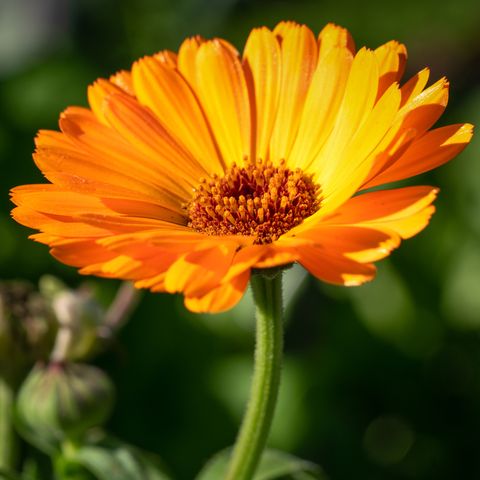
Calendula
Hardy annual / Sow from March to May / Repeat flowering: yes / Full sun or partial shade
Calendula is another beautiful edible daisy-like flower, suitable for salads as well as the vase. It will flower from June to late autumn in shades of orange, yellow, cream or pinky-brown. They also grow well in pots and again the pollinators love them. Calendula has a light earthy scent and an excellent vase life.
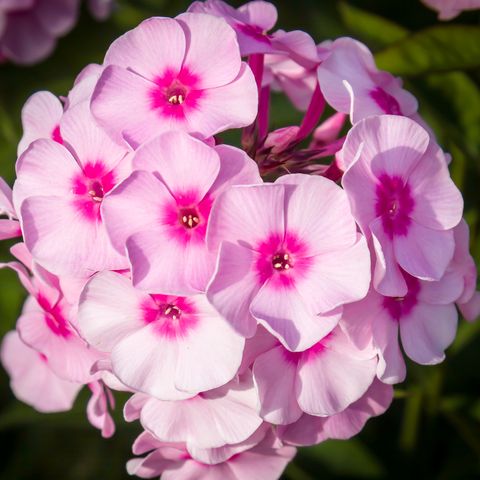
Annual phlox
Half-hardy annual / Sow under cover from March to May / Repeat flowering: yes / Full sun
There are a range of annual phloxes offering colours from cremes to pinks through to blues and purples. Each little starry flower has its own exquisite shades and markings. It's a floppy grower and is best grown through other plants or supported by short pea sticks. Phlox makes a beautiful filler in an arrangement and has an extraordinarily long vase life of around three weeks. No scent.
Late summer/autumn cut flowers
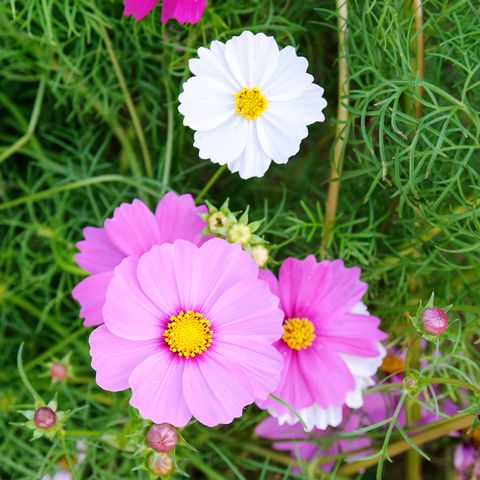
Cosmos
Half-hardy annual / Sow from March to May under cover / Repeat flowering: yes / Full sun
Cosmos are fabulous flowers; simple, floaty and delicate but with a good vase life. They can be grown in shades of white, lemon, pink and red and newer varieties have interesting petal shapes. They will flower from July to the first frosts, and rather like sweet peas can be hard to keep up with, they are so floriferous! No scent.
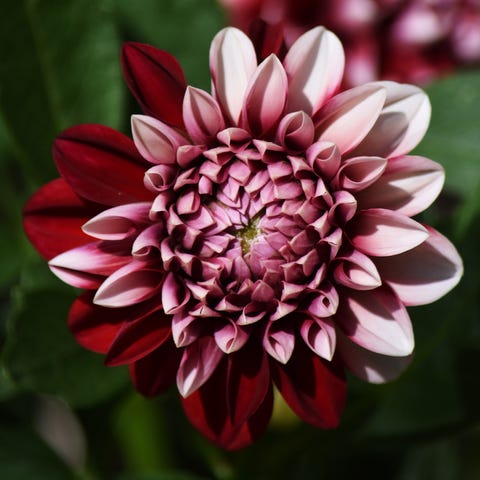
Dahlias
Half-hardy to fully hardy perennials depending on location and soil type / Plant out from May having started the tubers under cover from March / Repeat flowering: yes / Full sun
It's hard to imagine a cutting garden without dahlias in autumn. Dahlias are available in every conceivable colour except blue and in simple daisy shapes to complex multi-petaled tight balls. Small and dainty through to dinner plate-sized blooms, dahlias have something for everyone. If your soil is waterlogged and cold in winter the tubers will need to be lifted after the first frosts, cleaned, and stored in a dark cool spot away from mice ready to plant out again in spring. If you have free draining soil they can be left in the ground and simply protected with a good thick layer of mulch. They can be very tall plants and often require staking. Dahlias flower prolifically from July to the first frosts and last extremely well in the vase. When cut, dahlias have a light peppery scent.
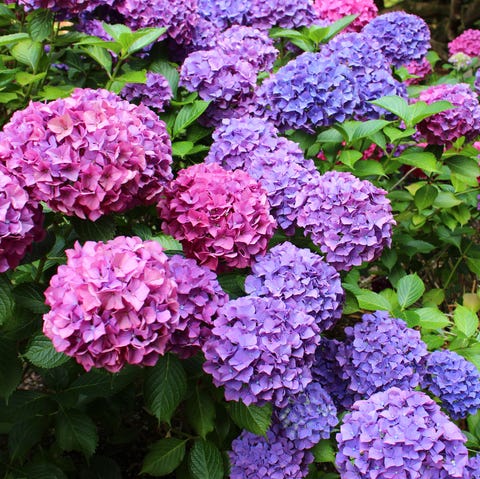
Hydrangea
Hardy perennial / Plant in late autumn through to early spring / Repeat flowering: no / Part shade
Hydrangeas come in a huge range of varieties, flower shape, height, spread and colour, so choose carefully. They have a long flowering season from July to early winter and as the weather cools their colours will often change too. The flower heads dry beautifully and can be used for dried flower arrangements. Some of the best for arranging are the small headed types such as 'Annabelle', 'Limelight' or the petiolaris or paniculata varieties. No scent.
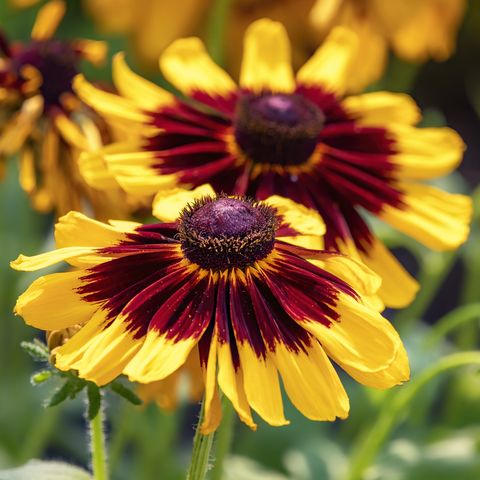
Rudbeckia
Half-hardy annual / Sow under cover March to April and direct sow April to June / Repeat flowering: yes, if cut at a leaf junction. / Full sun
These are fabulous daisy-shaped plants with teddy bear nose-like centres. They are loved by pollinators and range in colour from yellow, through to honey-toned browns and reds. Rudbeckias enjoy a wonderfully long vase life and flower from July through to the first frosts. No scent.
Follow House Beautiful on Instagram.
Brigitte Girling Freelance garden writer, floral artist and photographer Brigitte is a lifelong gardener specialising in sustainable and wildlife gardening.


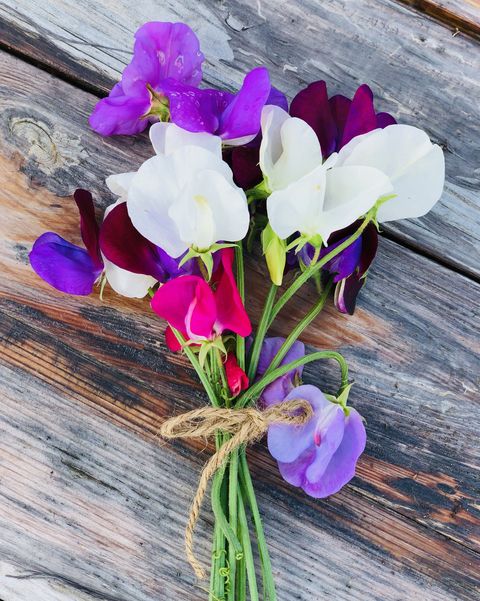
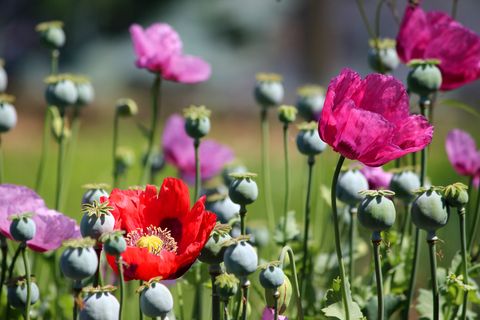




















0 Response to "Flowers That Can Continue to Grow After Being Cut"
Post a Comment